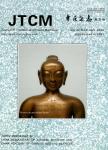Efficacy of Shouzhangshen(Rhizoma Gymnadeniae Crassinervidis)extract against acute high altitude hypoxia-induced brain injury in mice
Efficacy of Shouzhangshen (Rhizoma Gymnadeniae Crassinervidis) extract against acute high altitude hypoxia-induced brain injury in mice作者机构:Medical CollegeTibet UniversityLhasa 850000China Department of Chemical BiologySchool of Pharmaceutical SciencesPeking UniversityBeijing 100191China Tibetan Traditional Medical CollegeLhasa 850000China Key Laboratory of Health Cultivation of the Ministry of EducationBeijing University of Chinese MedicineBeijing 100029China College of Life SciencesShandong Normal UniversityJinan 250014China
出 版 物:《Journal of Traditional Chinese Medicine》 (中医杂志(英文版))
年 卷 期:2021年第41卷第4期
页 面:546-555页
核心收录:
学科分类:1008[医学-中药学(可授医学、理学学位)] 1006[医学-中西医结合] 100602[医学-中西医结合临床] 10[医学]
基 金:Supported by the Project of the Regional Collaborative Innovation Center of Tibetan Medicine(2018XTCX013) the Central Support for the Reform and Development of Local Colleges and Universities:Rescue Protection and Construction of Tissue Culture Platform for Endangered and Precious Tibetan Medicinal Materials the Fund for Less Developed Regions of the National Natural Science Foundation of China(No.81960727) the Science and Technology Plan Project of Tibet(XZ201901-GA-01) the Science Research Cultivation Project of the Medical College of Tibet University(2019XSZX02) the Fund for Research Cultivation Program of Tibet University-Growth Project(ZDCZJH19-15)
主 题:altitude sickness neuro-protective effect Hypoxia-Inducible Factor 1 alpha Subunit interleukin-1beta tumor necrosis factor-alpha vascular endothelial growth factors Shouzhangshen
摘 要:OBJECTIVE:To evaluate the protective effect of Shouzhangshen(Rhizoma Gymnadeniae Crassinervidis)extract against acute high altitude hypoxia-induced brain injury in ***:Sixty C57BL/6J mice were selected and assigned to six groups(n=10):normal control group,low-pressure hypoxia group,positive control group(dexamethasone 500 mg/kg),and three groups treated with Shouzhangshen extract(250,500,and 750 mg/kg,respectively).The Morris water maze test was performed to evaluate alterations in spatial learning and memory *** staining was performed to detect Nissl bodies and neuron ***-inducible factor(HIF)-1α,interleukin(IL)-1β,tumor necrosis factor(TNF)-α,vascular endothelial growth factor(VEGF),and malondialdehyde(MDA)expression in brain tissue and serum,as well as superoxide dismutase(SOD)and glutathione(GSH)activity in brain tissues were measured by enzyme-linked immunosorbent assays,quantitative real-time-polymerase chain reaction and western ***:The Morris water maze test results showed that Shouzhangshen extract can significantly reduce the latency and swimming distance to escape onto a visible platform,increase neuron density and hierarchy and the number of pyramidal neurons,and decrease the expression of HIF-1α,IL-1β,TNF-α,and VEGF mRNAs and proteins in both brain tissue and serum(P0.05).CONCLUSION:Our findings suggest that Shouzhangshen extract may have a significant effect on acute high altitude hypoxia-induced brain injury in mice.



